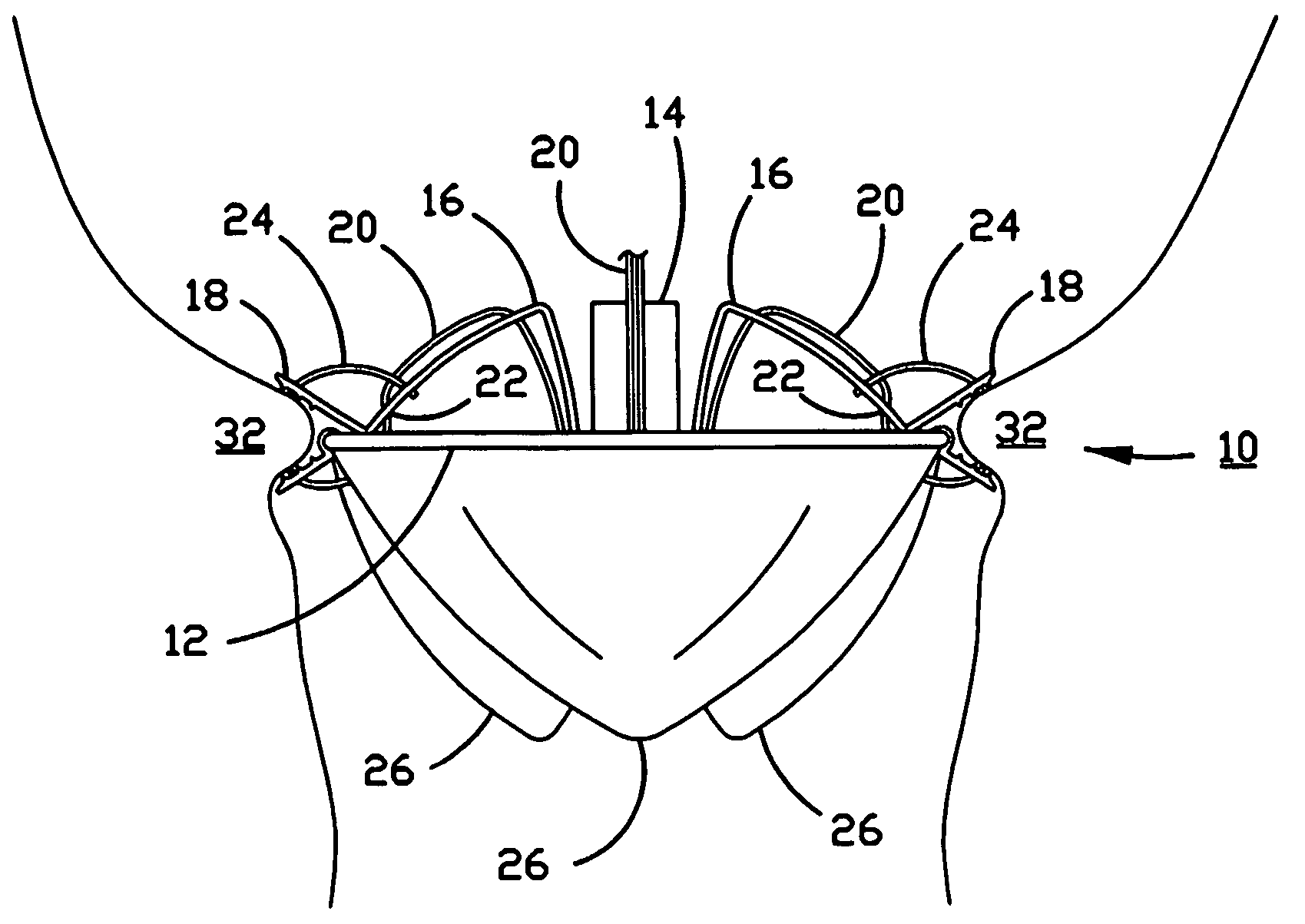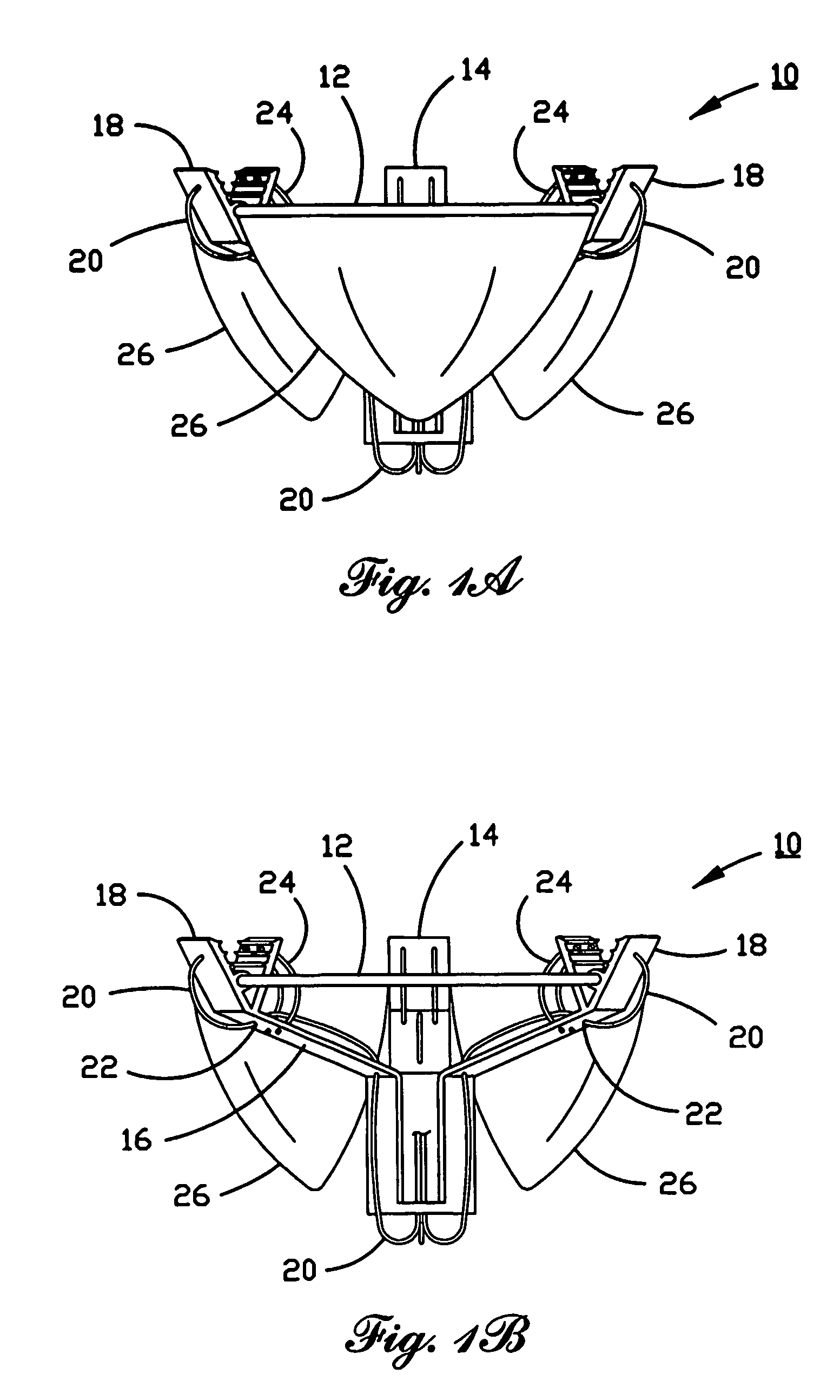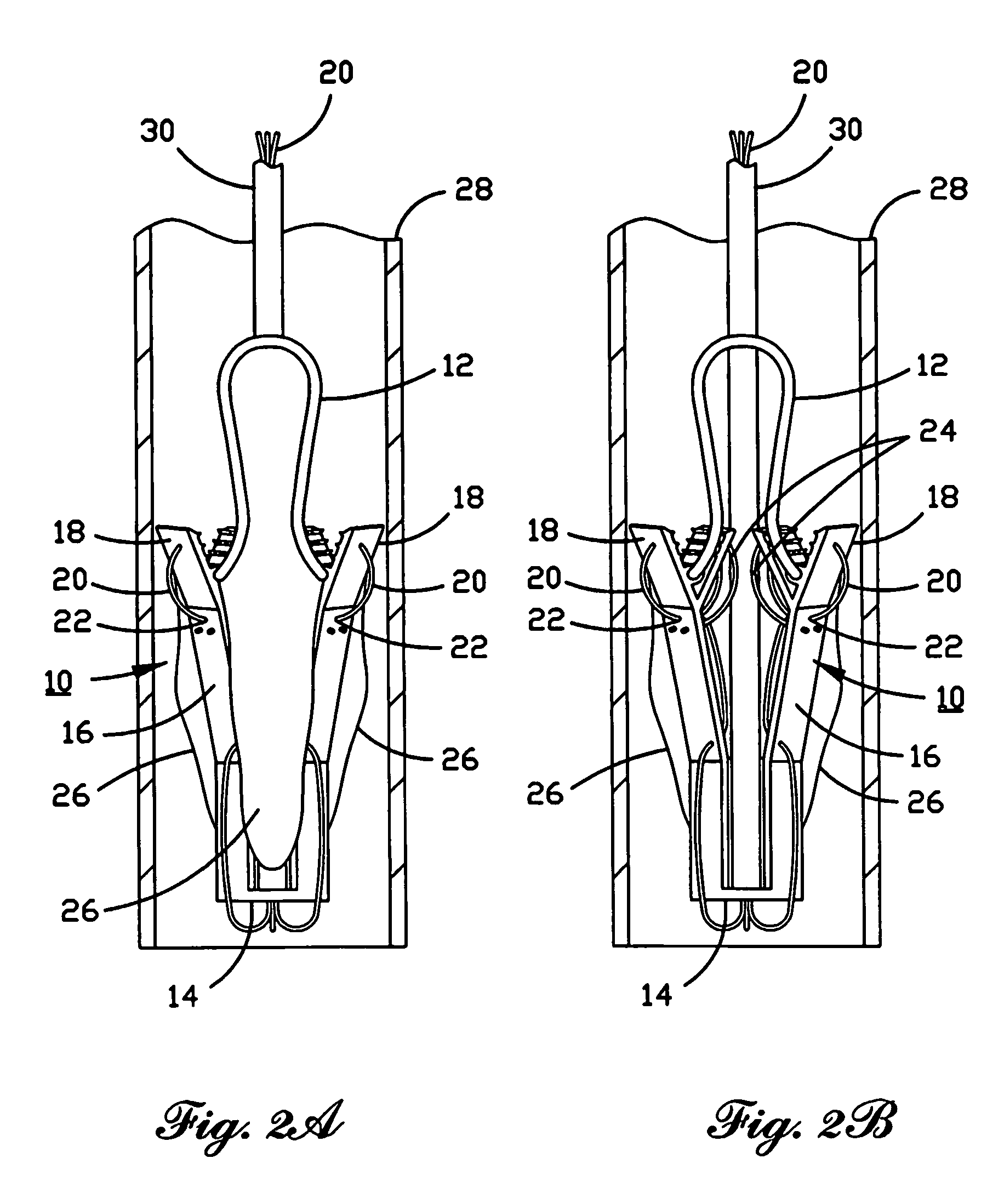Percutaneous heart valve
a heart valve and percutaneous technology, applied in the field of percutaneous heart valves, can solve the problems of the mitral regurgitation, and achieve satisfactory stability and so as to avoid affecting the function of the heart valv
- Summary
- Abstract
- Description
- Claims
- Application Information
AI Technical Summary
Benefits of technology
Problems solved by technology
Method used
Image
Examples
Embodiment Construction
[0039]The invention will be described with reference to FIGS. 1-12. Those skilled in the art will appreciate that the description given herein with respect to these figures is for exemplary purposes only and is not intended in any way to limit the scope of the invention. All questions regarding the scope of the invention may be resolved by referring to the appended claims.
[0040]The heart valve described herein has a triangular-based bistable compliant structure that forms the housing for valve leaflets made of standard biologic or artificial prosthetic material, such as cryo or chemically preserved bovine pericardium. The structure is folded inside a catheter for transseptal delivery to the mitral valve cavity or by direct venous or arterial delivery to the aortic valve, pulmonary valve, or tricuspid valve cavities. The folded structure is advanced through the catheter by, for example, a smaller diameter guide catheter, to the implantation position (e.g., left atrium for mitral valv...
PUM
 Login to View More
Login to View More Abstract
Description
Claims
Application Information
 Login to View More
Login to View More - R&D
- Intellectual Property
- Life Sciences
- Materials
- Tech Scout
- Unparalleled Data Quality
- Higher Quality Content
- 60% Fewer Hallucinations
Browse by: Latest US Patents, China's latest patents, Technical Efficacy Thesaurus, Application Domain, Technology Topic, Popular Technical Reports.
© 2025 PatSnap. All rights reserved.Legal|Privacy policy|Modern Slavery Act Transparency Statement|Sitemap|About US| Contact US: help@patsnap.com



